![]() Hello, gentle readers, and welcome back to the RPG Reload, the weekly feature where killing giants rats is always on the menu, but eating them is a rare treat. Each week, we take a look at an RPG from the App Store’s past. Do we do this for honor? For glory? No, we do this because there are lots of great RPGs worth revisiting, and it’s nice to break out of the weekly update cycle now and then. I try to choose a wide variety of RPGs to cover in this feature, but for the sake of balance, I throw the choice over to you, the reader, once per month. The next reader’s choice Reload is next week, where I’ll be covering Silversword ($3.99). We actually had a tie this time around, so it went to a coin toss. Sorry, Avernum ($9.99), maybe next time!
Hello, gentle readers, and welcome back to the RPG Reload, the weekly feature where killing giants rats is always on the menu, but eating them is a rare treat. Each week, we take a look at an RPG from the App Store’s past. Do we do this for honor? For glory? No, we do this because there are lots of great RPGs worth revisiting, and it’s nice to break out of the weekly update cycle now and then. I try to choose a wide variety of RPGs to cover in this feature, but for the sake of balance, I throw the choice over to you, the reader, once per month. The next reader’s choice Reload is next week, where I’ll be covering Silversword ($3.99). We actually had a tie this time around, so it went to a coin toss. Sorry, Avernum ($9.99), maybe next time!
Before we get under way with this week’s game, I want to talk about a change coming in how the reader’s choice will be selected. RPG Reload File 017 is the last reader’s choice article of 2014, and with the new year comes a new system. Initially, the goal behind giving you guys the chance to pick a game every month was to make sure I wasn’t accidentally ignoring anything. I felt going with a majority vote was the way to go, and so far, it’s served us fairly well. That said, by going with the majority, it means that the more obscure votes will never have a chance to win. Starting in 2015, the rules are changing just a little.
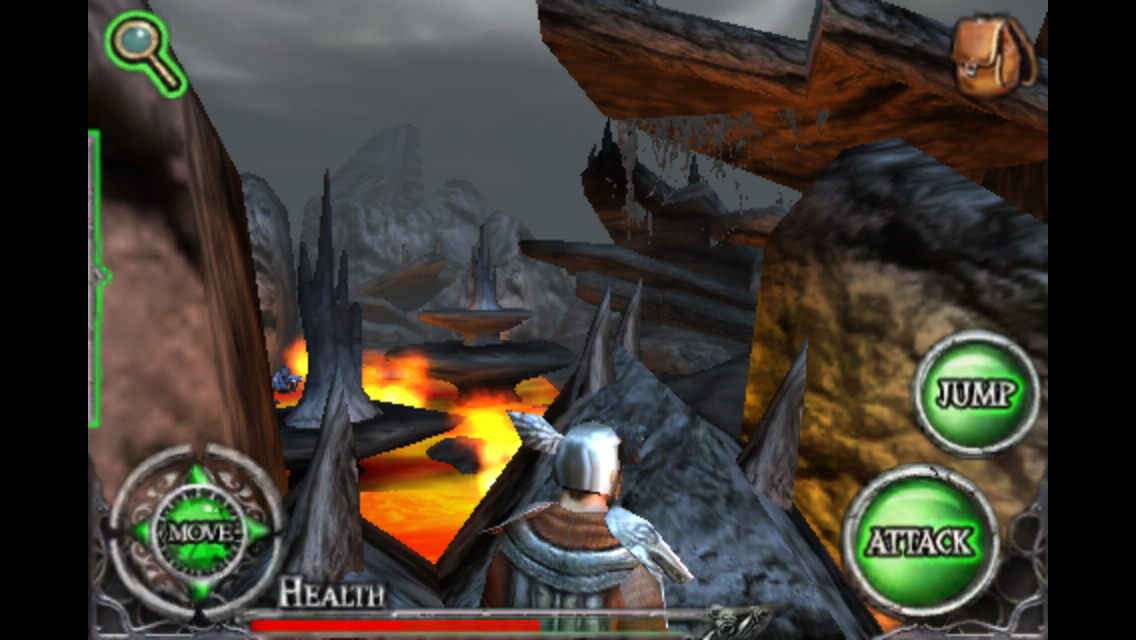
You’ll still vote for whatever game you’d like to see, but rather than just going with the majority as the winner, I’ll be doing a random draw among all the votes. This still gives the majority vote a bigger chance of winning, but it also gives a chance for less popular games to get in as well. As the next reader’s choice feature will be in January 2015’s RPG Reload File 021, the new system starts immediately! Please vote for whatever your heart desires, knowing that you’ll now have a better chance than ever of seeing a sentimental favorite take the victory. As usual, you can vote by leaving a comment below, dropping in on the Official RPG Reload Club thread in the forums, or by tweeting me at @RPGReload.
Okay, with that dirty bit of business taken care of, let’s get on with the final entry into our Origins Month. Last week, we checked out the early iOS action-RPG grind-em-up Zenonia, only to have the game disappear from the App Store the night before. I pray my awful power does not strike twice in a row. This week’s game, Ravensword: The Fallen King ($2.99), actually just turned five years old about a week and a half ago, having first released in mid-November of 2009. Like Zenonia, it was a pretty big hit that helped etch its developer’s name in the hearts and minds of iOS gamers for a long time to come. Also like that game, it is an action-RPG where you control a single character traveling around a big area killing the local fauna. That’s about where the comparisons stop, however, with Ravensword looking to emulate the big console RPGs of its era as opposed to Zenonia‘s inspiration from hits of the past. The game shot for the moon, fell short, but still ended up among the stars. I read that on a poster in my high school back in the day. There was a funny cat on it.
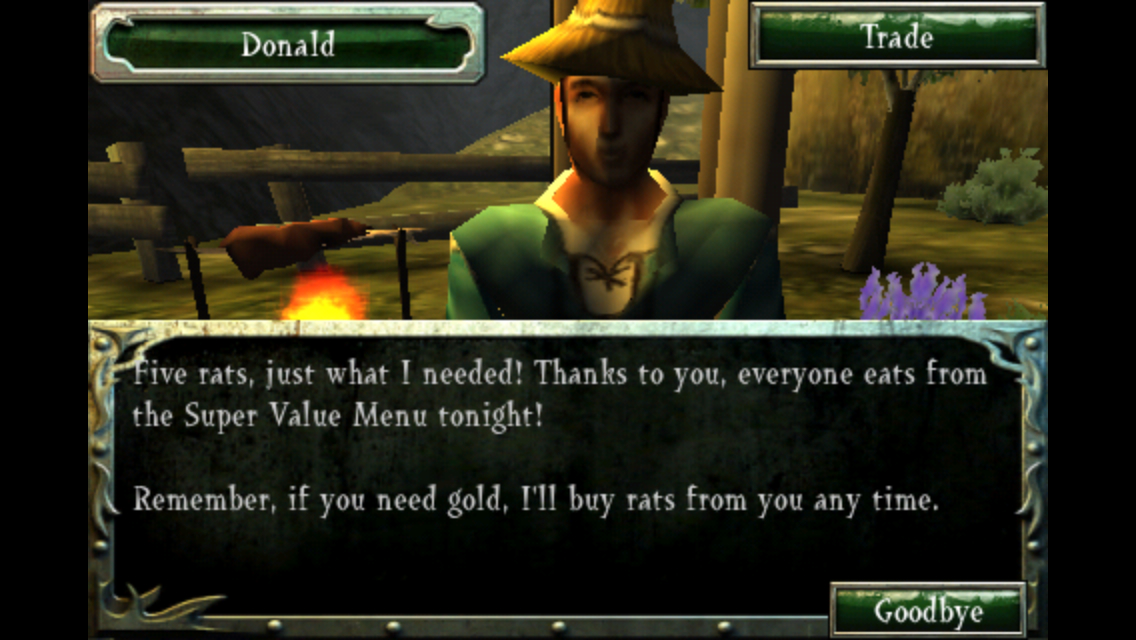
Ravensword: The Fallen King was the initial release of developer Crescent Moon Games, who in the intervening years have become quite a strong publisher in their own right. As they were newly-formed, this game was published by Chillingo in their pre-Electronic Arts days. At this time, Crescent Moon Games consisted of one person, Josh Presseisen, so the game was developed in cooperation with Russ Menapace of Human Powered Games, along with a handful of other people. Crescent Moon Games is a pretty busy company these days, but they still publish RPGs now and then, including the stunning Aralon: Sword And Shadow (Free), and this game’s successor, Ravensword: Shadowlands ($6.99). In the build-up to the game’s release, Ravensword was often compared to games like Oblivion. In hindsight, that was expecting far too much, but it’s still incredible to think that a small team of around ten people was responsible for The Fallen King.
You play as an amnesiac who wakes up in a bed in a small village, being watched over by a kind woman who tells you that you were found in bad shape and brought back by some of the townspeople. In the game’s introduction, we’re told of dangerous beasts wandering at night, and that the good king of the realm has not been seen in ages. Things are not nearly as idyllic as they seem, in other words, and I’ll give you three guesses as to who has to clean things up. Apparently, in your feverish sleep, you were repeating the word ‘Ravensword’ again and again. Though your caretaker doesn’t know of a Ravensword, the nearby castle is known as Ravengard. She advises strongly against going there, however, instead encouraging you to find some work from a local entrepreneur by the name of Donny.
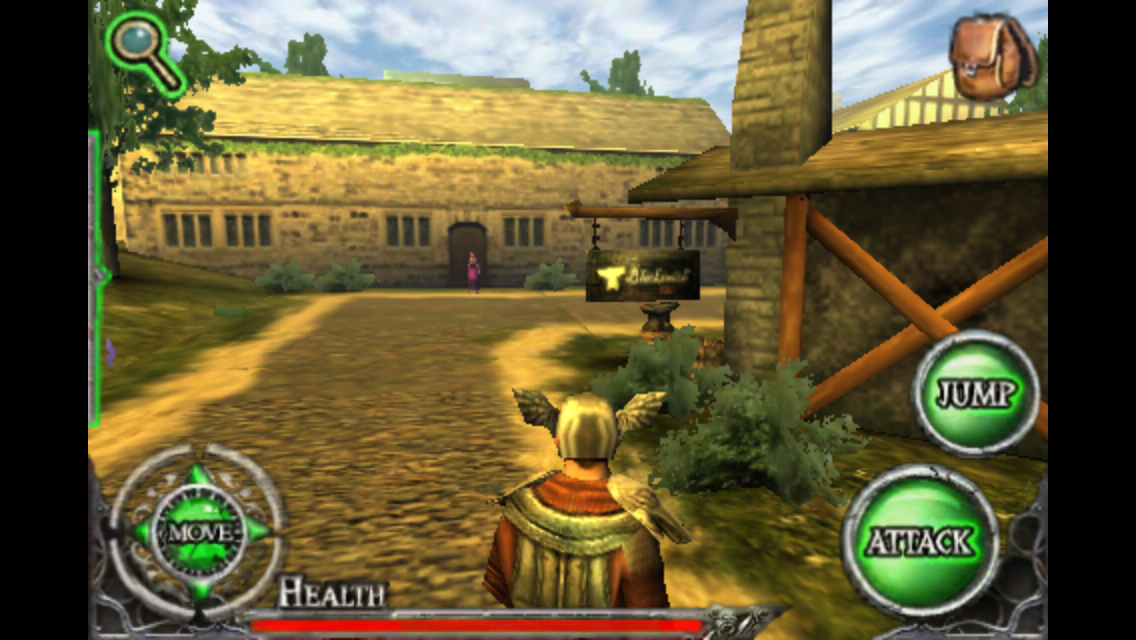
It’s a cozy room, and there will always be a plate of food waiting when you return to it. You might as well make yourself at home, because anytime you die, you’ll wake up back here. It’s like Groundhog Day, but without Sonny and Cher. Heading out from your cozy room, you’ll spot Donny just where you were told he would be. He runs a food shack where you can buy delicious meals and sell dead rats, two actions which I’m sure are unrelated. Donny, well aware of the traditions of the genre and ever the savvy businessman, offers you a single gold coin per dead rat you retrieve for him, and even goes so far as to give you a club to beat the little fellows with. You’ll soon trade in that club for something better, but it serves its purpose well enough at the time.
After helping Donny stock up for the dinner rush, you’re on your own. Talking to the townspeople points you towards the blacksmith, who has a job for you. It’s in your best interests to do it for him, but if you like, you can just go kill things outside of town for a while until you have enough cash to buy a bow and some arrows. With those, you can go do a couple of other side missions that will net you some extra wealth to afford the best armor the smith has available. That armor is also just about the best you’ll find in the whole game, so that’s kind of awesome. After helping out the blacksmith, you’ll soon have your next job lined up, and so it goes for the rest of the game. Some games with large worlds are sometimes not clear about where you need to go next, but that accusation could never be made against Ravensword. You’re free to wander off at any time, but there are certain gates in place that serve to nudge you back towards what you’re supposed to be doing without making it feel like it’s shoving you.
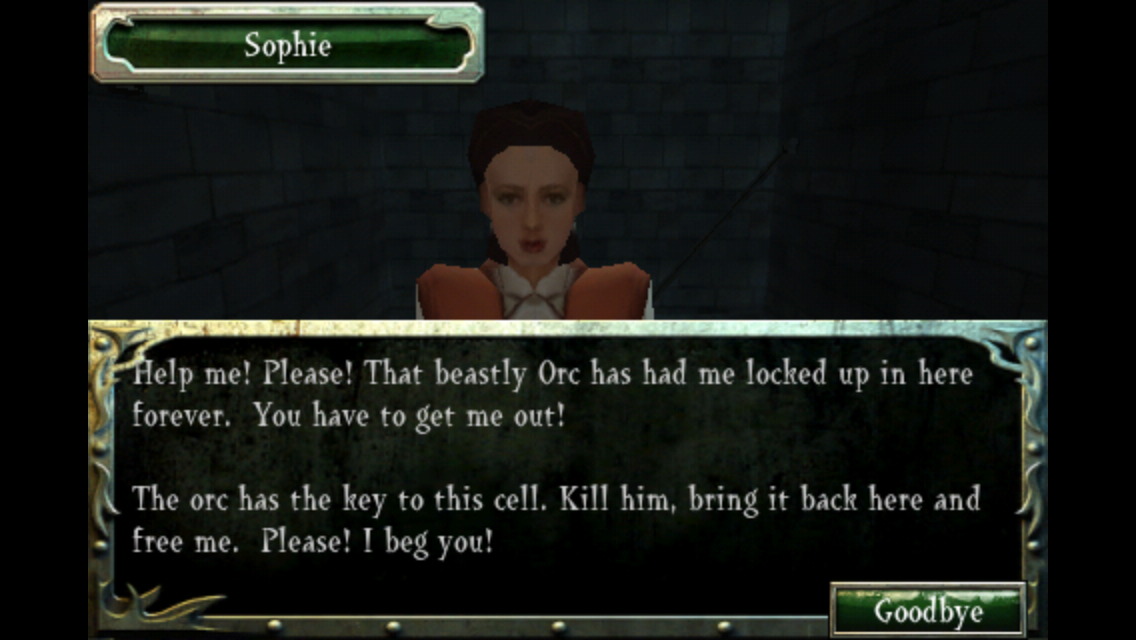
It’s interesting that for the many games I’ve heard Ravensword compared to, one that never comes up is Dragon Quest ($2.99). I suppose I can see why, as on the surface, they don’t seem to have anything in common. The art style, perspective, combat mechanics, and so on are completely different. Yet, at the core, these two games have a great deal in common. Both games feel open while actually being quite linear, have a largely-silent main character whose progression is out of your control, feature a relatively small list of equipment, and have similar narrative structures that serve mainly as a series of excuses to send you around the world to level up so that you can handle the final boss. There’s no question that for all of its detail, Ravensword is a very simple and straightforward game. The sequel to the game outclasses it in complexity such that many people feel the first game has little to offer. Personally, I reject that notion. Ravensword may not offer the depth that a lot of RPG fans crave, but it wears its simplicity well, the same way Dragon Quest does.
No, you can’t choose your class or customize your stats. There are no skills to learn, and your magic consists of just a few spells that you can cast using items. There’s no branching plot, and in fact, there’s barely a story at all. Your character has nothing to say apart from the few words used to question the townspeople. There isn’t much in the way of good loot to find, and you can count the number of real upgrades to your gear on one hand. Combat basically comes down to locking on, swinging your weapon over and over again, and doing a weird sashay in and out of the enemy’s range, while chowing down on food or quaffing potions to make sure you don’t end up booted back to town for running out of life. Death itself is little more than an annoyance, sending you back to your room with no penalty other than the time lost to walk back to where you were. In short, there are plenty of ways you can poke at Ravensword, and if you happened to come in expecting something like Oblivion, I could certainly understand feeling a bit raw about these things.
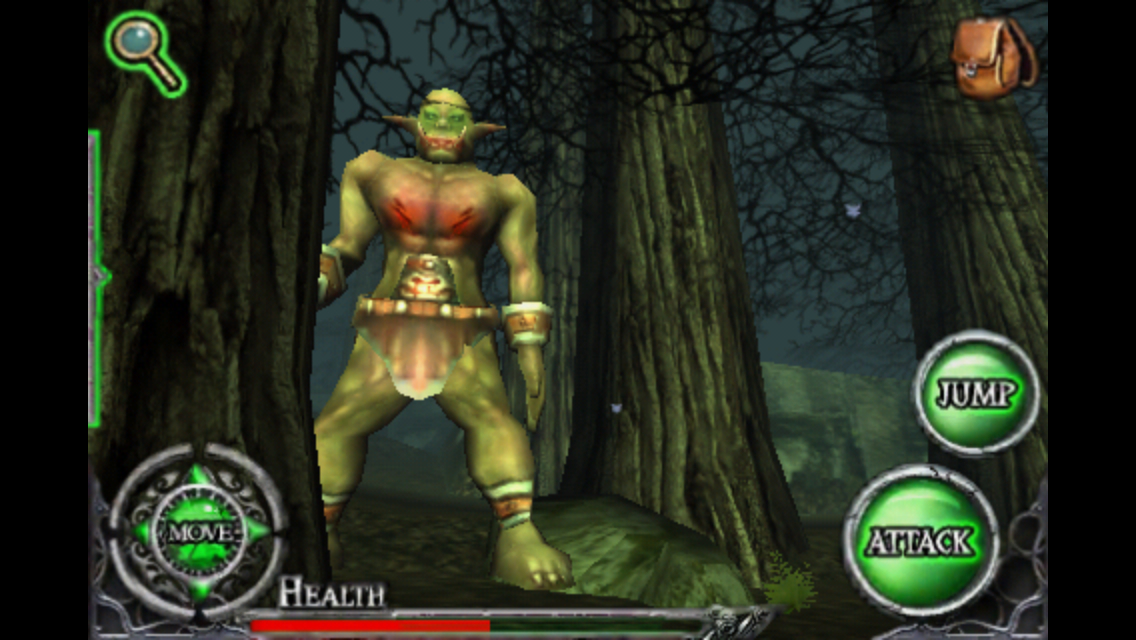
In a way, though, while the years haven’t been kind to the game in terms of its features and content, getting a bit of distance from the hype helps Ravensword stand on its own merits. Its reasonable length, simplicity, and excellent pacing make it a very fun game to revisit. Only a few points really stood out negatively for me on this playthrough. The combat is a bit clunky and isn’t quite as satisfying as it could be. I don’t like the shop interfaces much at all, as you can’t see the stats of items to know if they’re better or worse than what you’re using, and buying things in large quantities is an irritating one-by-one affair. There’s a whole lot of walking, and too much of it involves backtracking, especially if you die. In general, the game likes to send you to one end of the map to get something you need to unlock a door on the other side of the map, but there are at least plenty of things to kill and collect along the way.
One of the big selling points of the game back in the day was how big and detailed the world was, and just how good everything looked given the hardware of the time. Five years later, that’s obviously not as big of a bullet point, but Ravensword still looks decent enough. The sense of scale is still intact, and visual surprises like a certain overfed fellow out past the graveyard are just as effective today as they were before. There’s quite a good variety to the game’s various zones, and even though they look a little polygon starved these days, there’s still a certain sense of beauty to them. The game’s last update was in July of 2010, so luxuries like filling out the whole screen or supporting retina displays won’t be found here, but the game still runs without any issues. The audio side of the presentation was outstanding at the time and is still quite strong. It seems pretty unlikely the game will ever be updated again, but the fact that it’s weathered five iOS updates without breaking gives me hope it will still be playable for a long time to come. It’s a little fussy about multitasking sometimes, but the game kindly saves on the spot whenever it’s closed, so the worst consequence is having to sit through the initial load and title cards again.
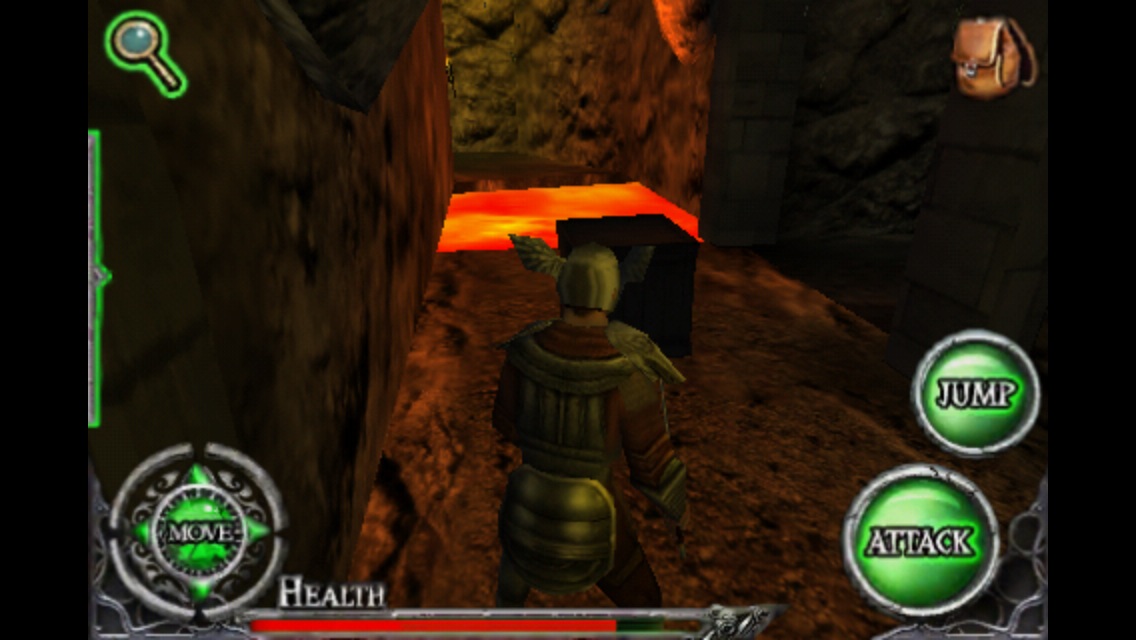
Ravensword: The Fallen King‘s importance to the early iOS scene is significant. It helped establish that there was a market for this level of effort on the platform. For that alone, the game has historical value that it may or may not get credit for in the long run. Of course, that’s no guarantee that the game is worth playing now, but in this case, I think it’s fine. It’s not going to bowl you over like it may have at one time, but there’s still a certain sweet nostalgia to its clean approach. It’s not as sophisticated or refined as later Crescent Moon RPGs, and it has its fair share of rough bits, but it’s still a fun RPG to run through on a quiet weekend.
That’s my takeaway from my latest playthrough, but it’s just my opinion, of course. What do you think of Ravensword: The Fallen King? Tell me your stories, friends, because I love to read them. Leave a comment below, stop by the Official RPG Reload Club thread, or tweet me a… tweet at @RPGReload. Don’t forget to cast your vote for the first reader’s choice of 2015 while you’re at it. This time, any game could win! As for me, I’ve got some ratburgers to eat before I tear into my next quest, which you can read about next week. As always, thanks for reading!
Next Week’s Reload Hint: At your request, it’s Silversword!